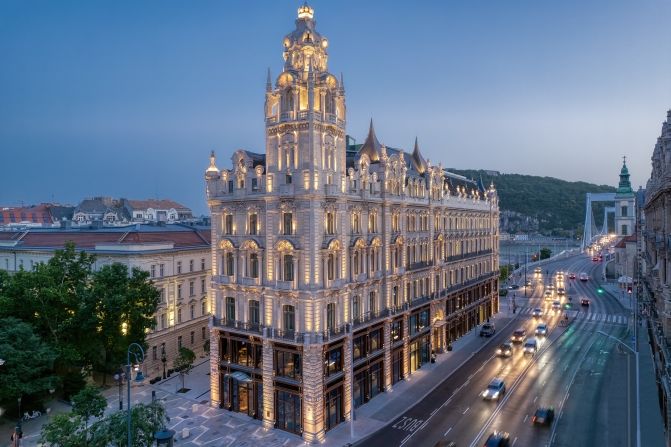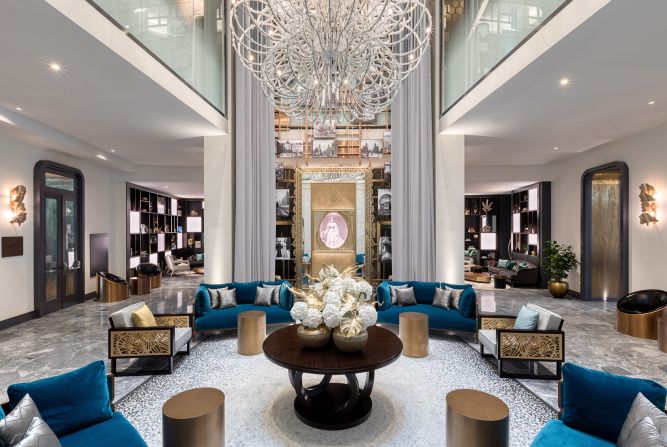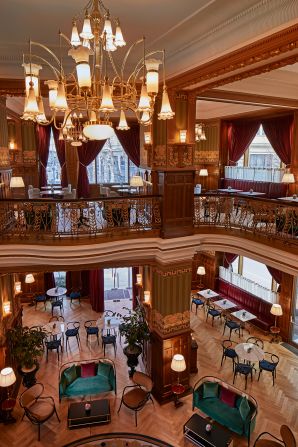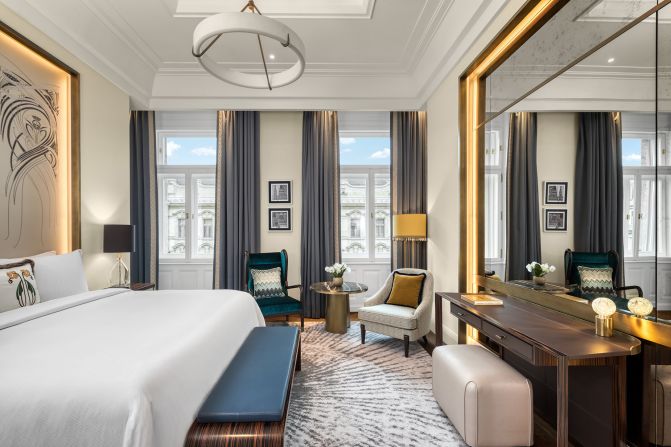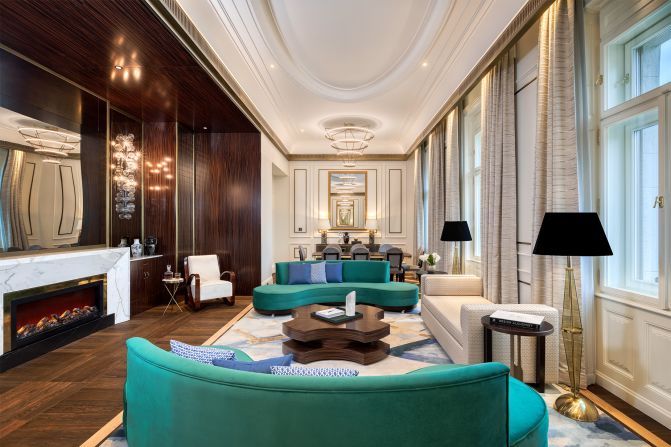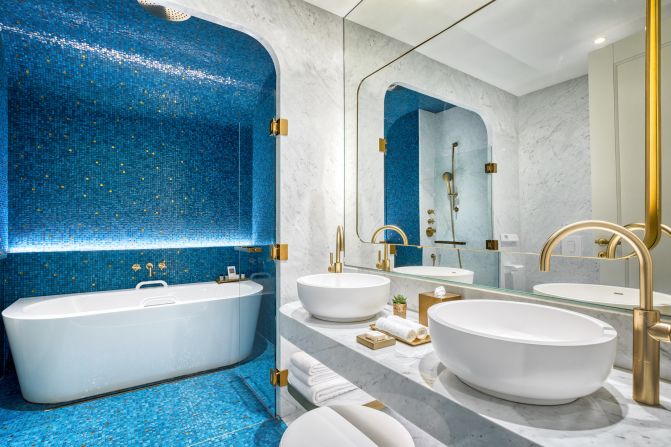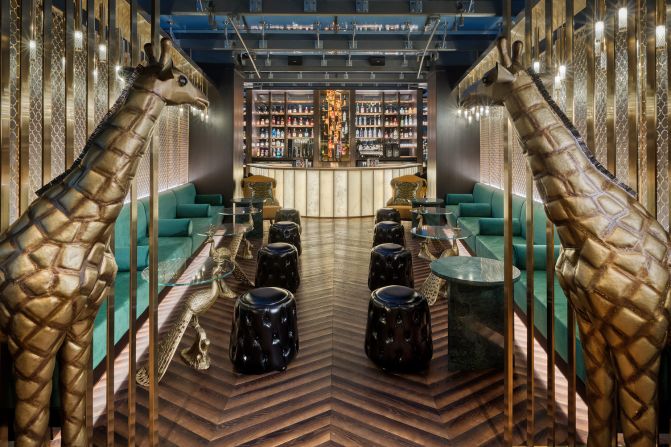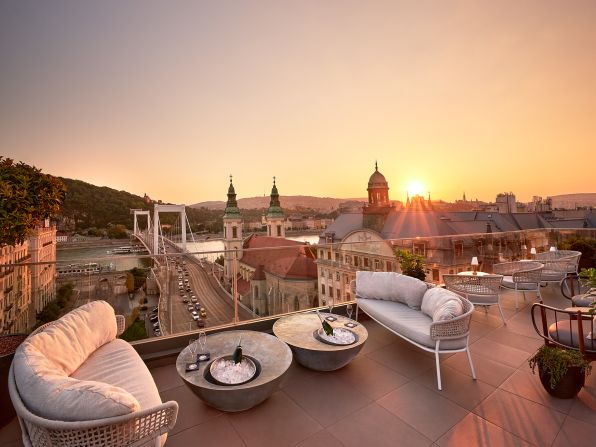Editor’s Note: This CNN Travel series is, or was, sponsored by the country it highlights. CNN retains full editorial control over subject matter, reporting and frequency of the articles and videos within the sponsorship, in compliance with our policy.
For more than 120 years, the Matild Palace has stood over the Elisabeth Bridge, welcoming those who cross the Danube River from Buda to Pest – the two halves that make up Hungary’s capital city.
Built in 1902 when the Austro-Hungarian empire was economically strong, the palace was erected as a symbol of strength and success.
From its golden era in the early 20th century to the present day, the Matild was a place where people came to be seen and to bask in the glory of its luxurious surroundings.
Before the empire dissolved in 1918, Europe’s rich, royal and famous would flock here to socialize in the palace’s public café, which back then was a star of Hungary’s famous café culture.
But despite surviving two world wars and enjoying a 1950s renaissance, the Matild Palace declined under communist rule and post-Soviet era revival attempts never quite restored its former glory.
Following a five-year transformation led by world-renowned interior designer Maria Vafiadis and local architects Puhl Antal and Péter Dajka, the Matild Palace has once again reclaimed its status as a jewel in Budapest’s social scene.
It reopened its doors as a 130-room, luxury five-star hotel in 2021 - the Marriott-branded Matild Palace, A Luxury Collection Hotel - marking the latest chapter in its rich and vibrant history.
Symbol of a new city
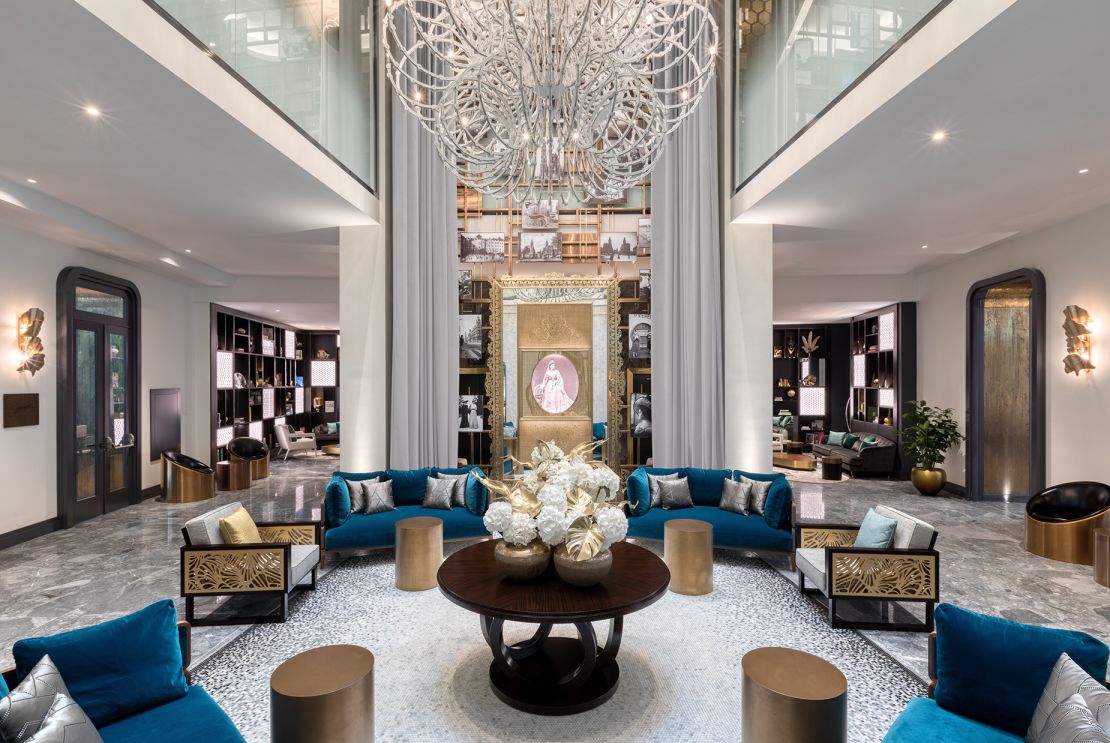
The Matild Palace’s story began in the late 19th century when Princess Marie Clotilde of Saxe-Coburg and Gotha, the Archduchess of Austria, who lived in Hungary, was pushing to bring some western European Belle Époque culture to the country.
She commissioned the Matild, and a sister building, the Klotild Palace, to stand on either side of the Pest-side entrance to the newly constructed Elisabeth Bridge over the Danube. The Matild housed private apartments and a popular café downstairs.
“Matild Palace was one of the most important, emblematic palaces at the center of Pest,” says Professor József Laszlovszky, director of the cultural heritage studies program at Central European University.
According to Laszlovszky, it was seen as a symbol of the 1873 fusion of three urban centers – Buda, Pest and Óbuda – into a new city.
“This fast urban development resulted in a new big, cosmopolitan city at the end of the 19th century, and new avenues and streets were created in this period, together with impressive public buildings and palaces.”
Completed in 1902, following plans delivered by architects Flóris Korb and Kálmán Giergl, Matild Palace quickly became the toast of Budapest. Royalty, presidents, prime ministers, and even international celebrities were all regulars. Not only were they greeted by interiors holding intricate Zsolnay ceramics, but also stunning stained glass works by famous Hungarian artist Miksa Róth.
Ground-breaking techniques used in the palace’s original construction were some of the first to be seen in Hungary. The core iron structure adorned with carved stone was a testament to the architectural ingenuity of the time.
The Otis Elevator Company installed the very first elevator system seen in Hungary within the Matild Palace. The property also included delicate moldings and artworks by an array of local craftsmen. These have all been lovingly restored and reimagined by artisans within today’s luxury five-star Matild Palace hotel.
Café culture
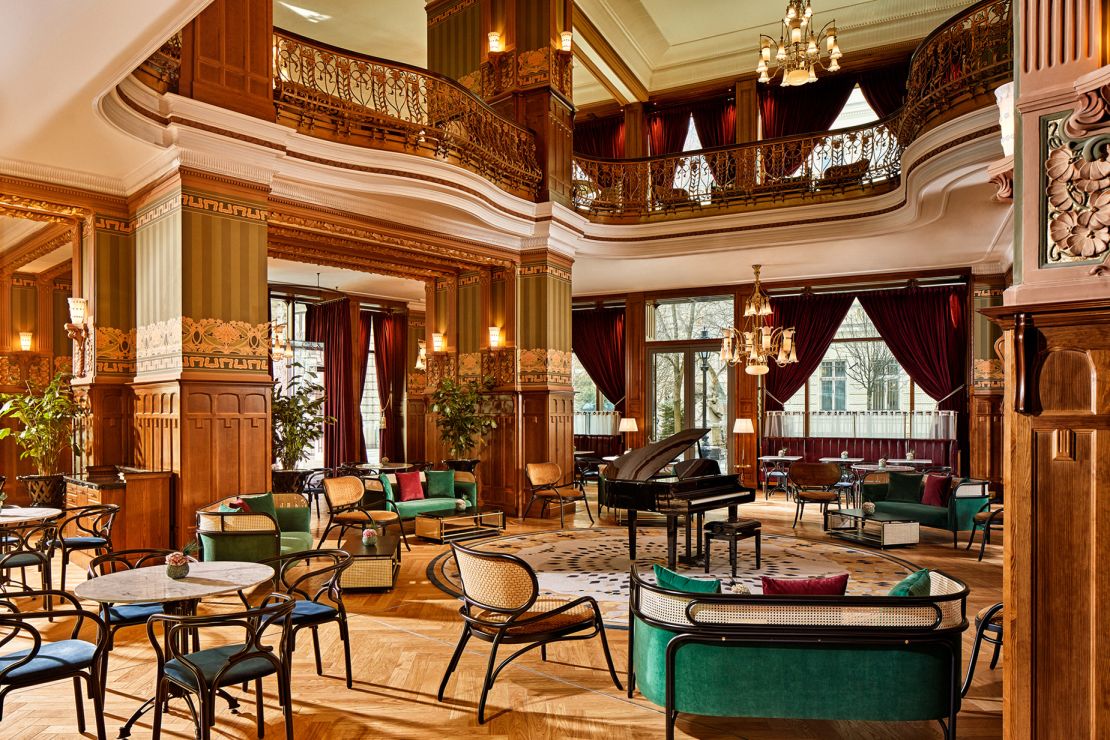
“During the last two decades, various attempts had been made to recreate the splendor of the original building and the café house,” says Laszlovszky. “However, it was only fulfilled in the last five years following the construction of the Matild Palace hotel which returned the building to its original glory.
“Thus, it represents a unique example of built heritage, as well as of intangible heritage, and one of the best examples of the café house culture in Budapest.”
After the devastation of the First and Second World Wars, culminating in the 1944-45 Siege of Budapest, the legendary Belvárosi Kávéház café situated inside the Matild Palace remained open, playing host to socialites, artists and writers who were regulars in Hungary’s famous café culture.
Post-war, the Matild Palace was restored in 1956, coinciding with the Hungarian Revolution – the short-lived uprising against Soviet control. The reopening of the palace’s café at the time was a symbol of a new beginning, a promise of hope and renewal for the people of Budapest. The café once again became a hub of activity, and the palace was quickly put into full use, albeit under stricter control.
“As a result of the communist system change, the café house was nationalized and it was the start of a long period, when various functions were found for the building,” says Laszloszky.
However, he says, these new roles often resulted in neglect of the building’s architectural and artistic assets and wore away at its café culture.
“The café house was, for example, a student canteen, or later a nightclub, with significant changes made to the decoration without restoring the original architectural design.”
Even this wasn’t enough to completely undermine the irrepressible elegance of the Matild Palace. In a testament to the resilience of this historic architectural masterpiece and, most importantly, the Hungarian human spirit, the palace was placed under UNESCO protection in 1977.
In 1984, following another extensive refurbishment, the Belvárosi Kávéház reopened with a new name, Lidó.
The Lidó became more than just a café for the people of Budapest during this time. It became a cultural hub, offering a lunchtime folklore show with dance and music as well as live jazz, cabaret shows and other entertainment.
$80 million transformation
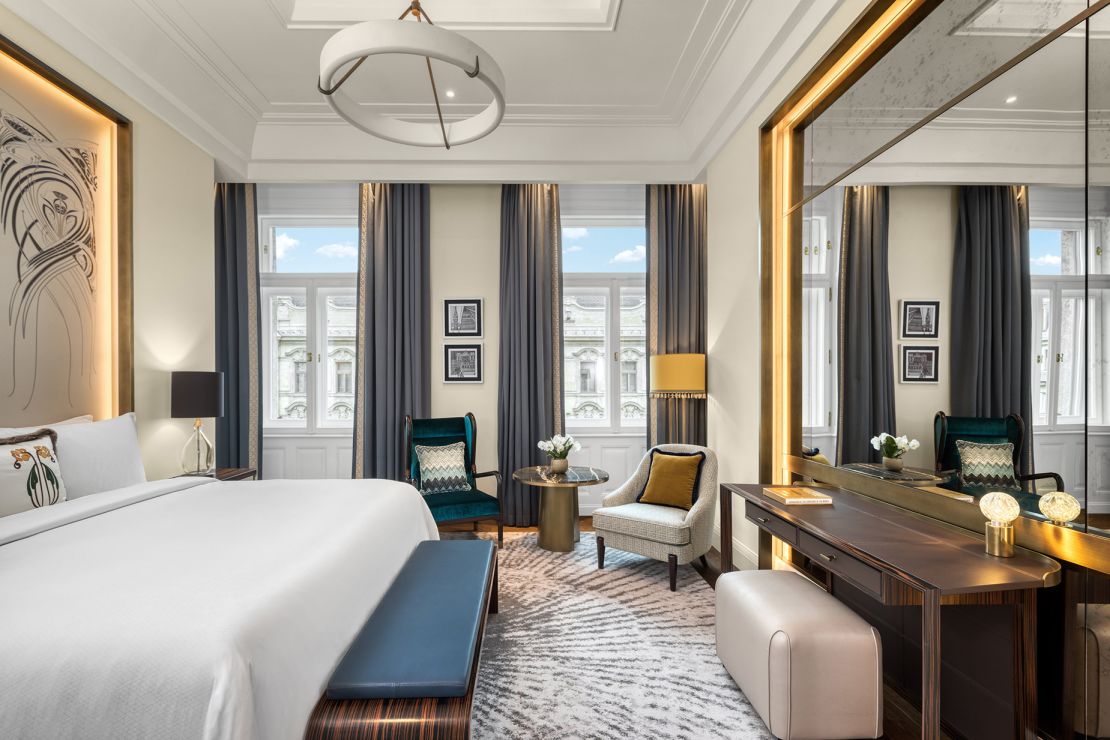
As Hungary entered the new millennium, the Matild Palace continued to adapt and evolve with the times. The Lidó took on a number of new guises. It was first a disco club, later a casino and now the Matild Café & Cabaret which has been lovingly restored to pay homage to its Belvarosi Kávéház days.
The most remarkable transformation took place in 2017, however, when a major renovation project said to be worth $80 million got underway to turn the Matild Palace into a luxury hotel.
“During the renovation and refurbishment of Matild Palace, the designers and owners paid particular attention to reconstructing the historic spaces in their original form, recreating the atmosphere of 120 years ago,” said Péter Dajka, one of the architects behind the latest Matild Palace renovation projects.
“This atmosphere is the soul of the building, and its preservation was also very important for the hotel’s concept and the interior design narrative.”
Particular attention was paid to preserving its historical integrity.
Today, the Matild Palace has been restored to its original grandeur, bringing the façade, passage, staircases, interiors, and historical café back to their original Belle Époque elegance.
“From the beginning we wanted to give back this iconic building to the locals, to the residents of the bustling capital of Hungary,” said Selim Olmez, general manager at Matild Palace, a Luxury Collection Hotel. “All our dining outlets are of course open not only to our hotel guests, but visitors and locals alike.”
“All of our guestrooms - featuring unique and delicate detailing such as headboards with Hungarian handcrafting, Hungarian style fishbone-design parquet floors and artwork referencing Budapest literature – were designed to honor our incredibly rich past.”
In a nod to the Matild Palace’s roots, the hotel’s swankiest rooms have been named the Maria Klotild Royal Suite, reflecting the Hungarian spelling of archduchess’ name. The award-winning apartment suite has crystal chandeliers, handmade glass mosaics and bespoke furniture, from marble-clad electric fireplaces to gilded bathrooms.
Olmez says the hotel is also trying to celebrate the importance of the palace’s café as a socializing hub for artists through the years.
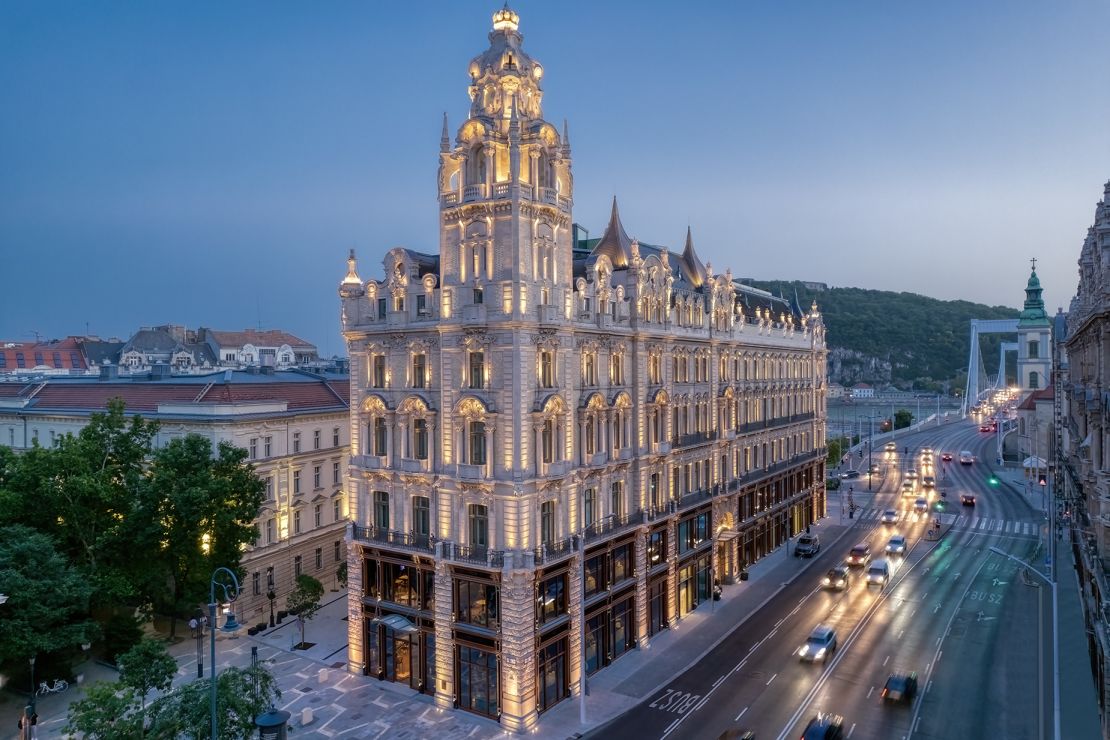
The café now displays artefacts, archive photos and artworks related to its past as a haven for Budapest’s creatives, while a statue of renowned Hungarian writer Gyula Krúdy – a Belvárosi Kávéház regular – has been installed outside.
“A thriving café culture can attract both tourists and locals,” Olmez says. “People who are interested in history, art, or simply a unique social experience may be drawn to the palace for its café culture, and it can also foster community and social interaction.
“We are aiming to provide not only gastronomic, but also an educational and immersive experience for our guests at the café; a place where people can meet, discuss, and engage in meaningful conversations, much like it might have been in the past.”
Here are the palace’s other highlights:
Spago by Wolfgang Puck
Marking the debut of his Beverly Hills dining concept in Hungary, Spago by Wolfgang Puck offers a contemporary take on traditional Hungarian cuisine as well as local versions of Puck’s signature Californian dishes.
Spago by Wolfgang Puck, Matild Palace, Budapest, Vaci Utca 36, Budapest 1056; +36 70 534 9000
The Duchess at Matild Palace
The Duchess is billed as a secret liquor library, hidden high above the Budapest rooftops. This luxury garden bar, which has great views across the city, was inspired by the archduchess, who is said to have requested a secret bar when the palace was commissioned in 1884.
The Duchess, Matild Palace, Budapest, Vaci Utca 36, Budapest 1056; +36 30 550 5000
Matild Café & Cabaret
The two-story Matild Café & Cabaret’s Belle Époque-style has been restyled as a vibrant but sophisticated party hub for the entire city. Cabaret shows are held on a hydraulic elevated stage which was discovered in the center of the room during the hotel’s extensive refurbishment project.
Matild Café & Cabaret, Matild Palace, Budapest, Vaci Utca 36, Budapest 1056; +36 30 550 5000
Swan Spa at Matild Palace
The Swan Spa at Matild Palace is one of the most charming boutique spas in Budapest. It offers a traditional Turkish-Hungarian-inspired bath experience with thermal therapy and Hammam rituals.
Swan Spa, Matild Palace, Budapest, Vaci Utca 36, Budapest 1056; +36 30 550 5000
The suites at Matild Palace
Matild Palace offers visitors a selection of 111 luxury five-star guest rooms and 19 executive suites. There are four guest room categories which each take inspiration from the duchess’s extravagant lifestyle. Most rooms provide breathtaking views across Budapest and the Danube.
